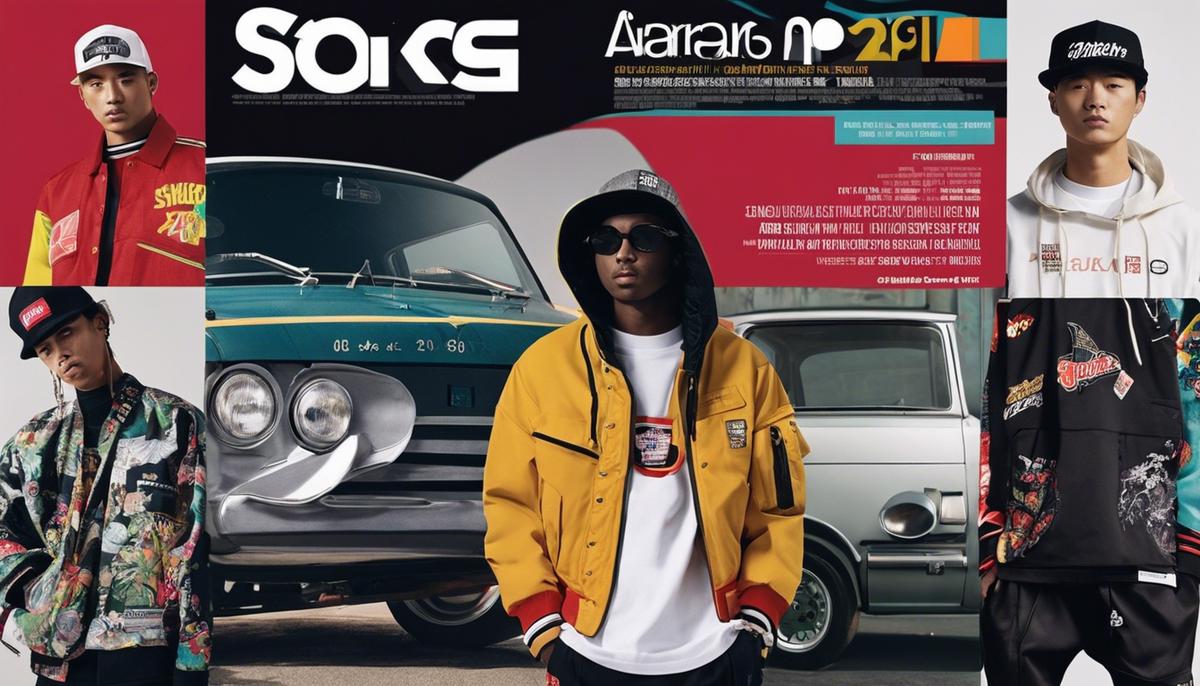The realm of fashion, long celebrated for its vibrant creativity and dynamic evolution, now stands on the cusp of a revolutionary shift toward inclusivity and innovation with the rising tide of adaptive fashion. As we peel back the layers of conventional aesthetics, a burgeoning market demand makes a compelling case for designs that transcend traditional limitations, speaking directly to the needs and aspirations of individuals with disabilities. This essay embarks on an exploratory journey through the societal and demographic changes fostering this demand, shedding light on the powerful economic impetus driving fashion brands to weave accessibility into the very fabric of their offerings. Illuminating key statistics and trends, we pave the way to understanding how embracing diversity in design is not only a moral imperative but also an untapped commercial opportunity.
Market Demand for Adaptive Fashion
In the bustling world of retail, one trend is cutting a swath through the fashion landscape: inclusive apparel. Industry leaders, move over—there’s a dramatic shift underway, and it’s reshaping the way clothing is designed, marketed, and sold.
What is inclusive apparel? It’s fashion for everyone—no exclusions. This isn’t just about sizes; it’s about designing with everyone in mind. Whether you’re tall or short, slim or curvy, have mobility issues, or need sensitivity to textures, inclusive apparel says, “This was made for you.”
So what’s driving this demand? Three words: awareness, accessibility, and advocacy.
Awareness is soaring as voices that were once marginalized are now amplified through social media. Consumers demand representation, and those calls are echoing in the boardrooms of big brands. It’s clear: understanding your customers’ diverse needs isn’t just good ethics; it’s good business.
Accessibility has taken center stage. The internet has democratized shopping, but it also shines a spotlight on brands that miss the mark. Inclusive apparel stands out—it’s a magnet for those who’ve been overlooked by traditional sizing.
And advocacy? Influencers, bloggers, and everyday buyers are speaking up. They’re done with the one-size-fits-all—or rather, one-size-fits-some—approach. These passionate individuals harness their platforms to demand change, not just in size inclusivity but in the very fabric of fashion.
Imagine a world where clothing adapts to people, not the other way around. This vision is already taking shape, transforming from a boutique concept to a mainstream expectation. The inclusive clothing market is expanding rapidly, projected to register substantial growth in the forthcoming years.
In a market that is increasingly socially conscious, businesses can’t afford to ignore the call for inclusive clothing. The direct correlation between social responsibility and profitability has never been more evident.
So, industry innovators and retail mavericks, here’s the takeaway: inclusive apparel is not just a fleeting trend—it’s the new frontier of fashion. Adapt and design with everyone in mind, or risk falling behind as this demand becomes the norm. After all, why limit your market when you can embrace the full spectrum of potential customers? The inclusive apparel movement is not just setting a benchmark; it’s setting the pace for the future of fashion. Welcome to the era where inclusivity is not only celebrated but expected. Now, get out there and make your mark.

How Can Adaptive Fashion Trends Influence Home Decor Trends in 2023?
Adaptive fashion trends for 2023 can greatly influence home decor trends 2023. The focus on inclusivity and accessibility in clothing design is likely to seep into interior design choices, leading to more functional and versatile home decor options. Expect to see elements of adaptability and inclusivity reflected in home decor trends 2023.
Innovations in Adaptive Clothing Design
Unlocking New Horizons: Tech’s Role in Revolutionizing Adaptive Fashion
As we dive deeper into the age of accessibility, technology stands as a lighthouse, guiding the adaptive fashion industry into uncharted waters. The tech-infused revolution in this burgeoning sector isn’t just about keeping pace; it’s about racing ahead to meet needs that have long been overlooked. From cutting-edge materials to smart clothing, here’s how innovation is stitching a new future for fashion.
Smart materials are reshaping the very fabric of adaptive apparel. With advances in textiles, clothing now can respond to the environment, providing temperature control and comfort like never before. Imagine a jacket that adapts to the warmth of indoors and the chill of the outdoors without the need for layered clothing – this isn’t science fiction, it’s today’s reality for adaptive fashion.
On-demand customization is no longer a luxury but a necessity to cater to diverse body types and needs. 3D printing and automated manufacturing enable companies to offer personalized clothing quickly and efficiently. Footwear that fits like a glove and supports unique foot structures is just the tip of the iceberg, as made-to-measure becomes the industry standard.
Technology isn’t just revolutionizing the product; it’s transforming the shopping experience. Virtual fitting rooms, using augmented reality (AR), allow customers to try on garments without ever stepping foot in a store, breaking down barriers for those with mobility challenges. This isn’t just convenient; it’s a lifeline for the differently-abled community seeking independence and style.
Artificial Intelligence (AI) is not just a buzzword but a pivotal player in this fashion metamorphosis. AI-driven analytics help brands predict trends, customize designs, and manage inventory, ensuring that adaptive clothing isn’t just a side category but a central, well-stocked offering. It’s about knowing the buyer before they even press ‘add to cart’, optimizing their choices and streamlining their journey.
In the flurry of advancements, wearable tech is the jewel in the crown of adaptive fashion. Garments that monitor health, assist with posture, and even aid communication for the non-verbal are turning clothing into caregivers. These aren’t just clothes; they’re companions for life’s journey, for anyone and everyone.
In the quest for inclusive apparel, tech is both the compass and the map. As the industry sails into the future, brands without a tech sail will find themselves becalmed in a sea of innovation. The fusion of technology and adaptive fashion is more than a trend; it’s a movement setting sail towards a horizon where style meets functionality, fashion meets freedom, and where every individual has the agency to express themselves, unhindered.
The confluence of technology and entrepreneurial vision is expanding what’s possible in adaptive fashion. The result is a vibrant tapestry of products that not only cater to needs but dare to anticipate them. This isn’t just about meeting a market demand; it’s about creating a world where the term ‘fashion for all’ is more than a catchphrase – it’s a tangible, wearable reality.

Photo by frostroomhead on Unsplash
Entrepreneurial Strategies in Adaptive Fashion
Emerging Collaborations and Partnerships Powering the Adaptive Fashion Ecosystem
In the rapidly evolving landscape of adaptive fashion, strategic collaborations and partnerships have emerged as pivotal engines of growth. Recognized brands are pooling resources with innovators and tech startups, crafting alliances that are as much about social impact as they are about bottom-line results. Traditional retailers are tapping into this vibrant market by joining forces with niche adaptive labels, leveraging each other’s strengths to broaden their reach and enhance their product offerings.
Customer-Centric Design Processes Set the Winners Apart
At the heart of thriving adaptive fashion brands is a relentless focus on customer-centric design processes. These companies aren’t just rehashing existing designs with minor adjustments; they are engaging directly with communities, listening to real-life challenges, and iteratively testing their products. Inclusive design sessions, featuring a cross-section of users with diverse abilities, are guiding product development and innovation, ensuring that new releases are not just inclusive in name, but in function and form.
Navigating Legislation and Policies With Finesse
Savvy operators in this space are well-versed in navigating the intricacies of industry legislation and policies. They stay abreast of the Americans with Disabilities Act (ADA) and other relevant regulations, harnessing them to shape practices and product lines. Forward-thinking firms are not just meeting the bare minimum requirements; they are setting industry benchmarks for compliance and exceeding them, positioning themselves as standard-bearers in the realm of inclusion.
- Tapping into an Underutilized Workforce: A Double-Edged Sword
Employing individuals with disabilities isn’t just a move to gain social kudos; it’s a strategic advantage. These brands understand that by tapping into an underutilized workforce, they gain unique insights and foster a culture of inclusivity that resonates with their customer base. Companies who champion diversity in their employment strategies gain not only publicity for their efforts but also real-world perspectives that translate into better, more empathetic products and services.
- Reinventing the Supply Chain for Efficiency and Ethics
In a market that demands both agility and sustainability, reinventing the supply chain is no longer optional. Adaptive fashion brands at the forefront are localizing production to reduce carbon footprints and expedite delivery times. But it’s not just about speed and eco-credentials; it’s about building ethical supply chains that reflect the brand’s values on human rights and fair labor, resonating with consumers who are increasingly making purchases based on their values.
The Bottom Line: It Takes More Than Just a Product
To truly excel in the burgeoning adaptive fashion industry, it’s clear that it takes more than a good product. Brands that consistently rise to the top do so through an amalgam of tech savviness, strategic partnerships, refined design processes, an understanding of legislation, employment diversity, revamped supply chains, and – most importantly – an unfaltering commitment to the ethos of inclusivity. As the market continues to swell, those who stay ahead of these strategic elements won’t just thrive in the adaptive fashion space; they’ll transform it.

The dynamic world of adaptive fashion stands as a testament to what can be achieved when innovation is paired with a profound appreciation for the diverse experiences of individuals. Those entrepreneurial spirits that boldly step into this arena, fortified by strategies that are as adaptive as the clothing they create, not only contribute to the social fabric but also demonstrate the extraordinary potential where purpose meets profitability. Through meticulous market analysis, genuine partnerships with advocacy groups, and astute application of technology, they sow the seeds for a future where fashion is synonymous with freedom and functionality, establishing a legacy that will clothe the ambitions of generations to come.











